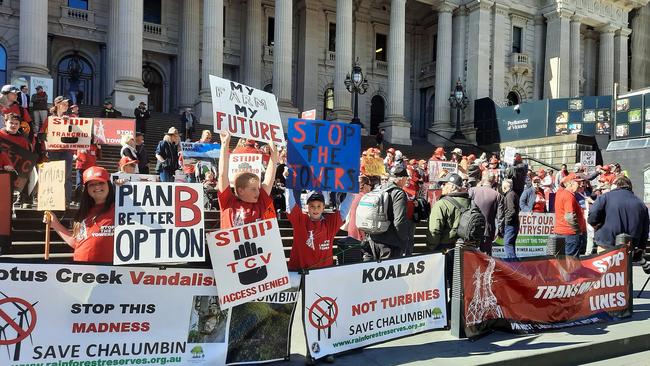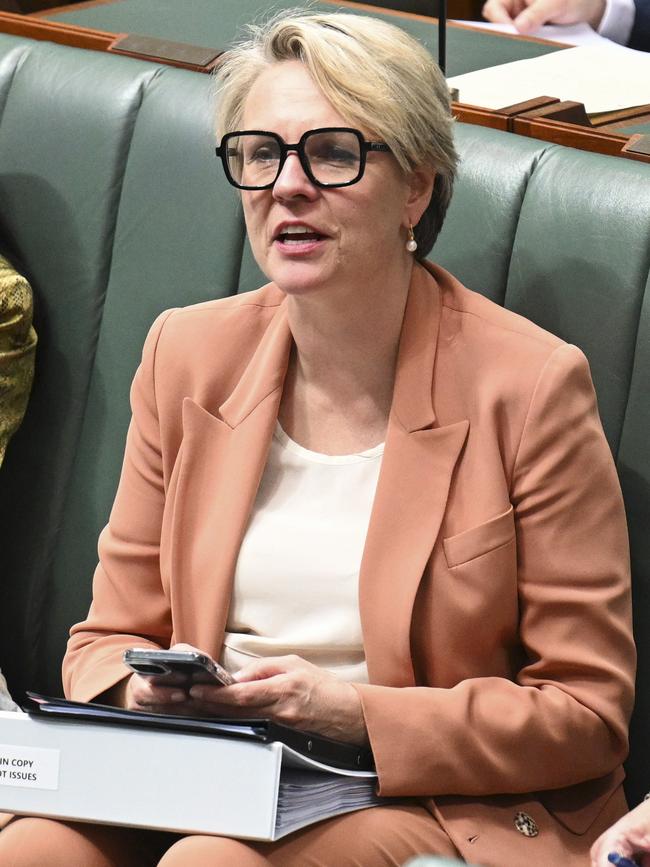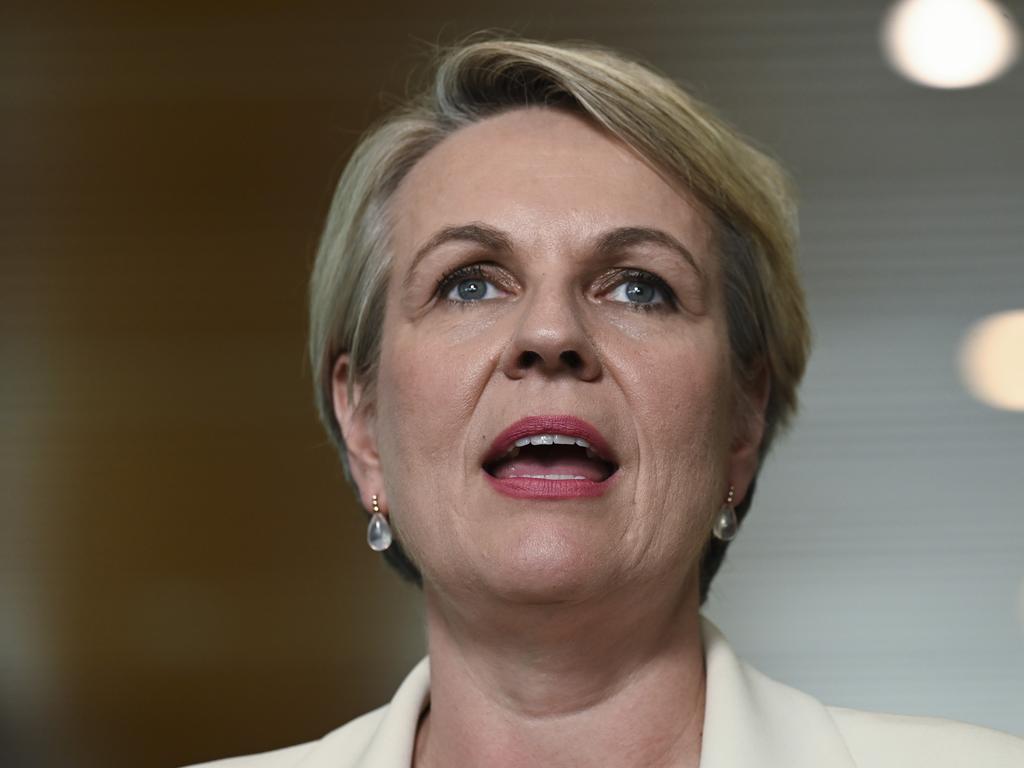
At 4.32pm on Friday, Ark Energy announced it was withdrawing its application to install 42 wind turbines at Chalumbin in far north Queensland following advice that the federal Department of Climate Change and Energy was about to reject it.
The meagre odds that Queensland can meet its legislated emissions target using renewable energy are now too small to be visible under a microscope.
For the wind industry, Environment Minister Tanya Plibersek’s rejection of Chalumbin is its Franklin Dam moment. It was a test case of the federal government’s willingness to weigh the environmental cost of installing turbines against the assumed benefits of low-carbon electricity.
Last July, when I drew national attention to the Chalumbin proposal in The Australian, I opened my column by noting that it would destroy 1000 of the remaining 8000 hectares of wet sclerophyll forest, the buffer zone between the rainforests and the open plains to the south.
Nine months later, the minister reached the same conclusion, telling The Guardian at the weekend the forest “provides a vital habitat for many birds, plants and animals, including the spectacled flying fox and the northern greater glider”.
Her decision measures how far the wind industry’s fortunes have sunk since June 2022, when the Queensland government approved the Chalumbin proposal under the corner-cutting assessment process. It applies to anything with the word “renewable” attached.
Bulldozers were ripping swathes through hundreds of hectares of remnant native forest at nearby Kaban, blasting 330,000 tonnes of rock and dirt from the sides of hills to build access roads and turbine pads bigger than football fields.

All of this was occurring without a squeak from environmental groups, every one of which appeared to have swallowed the renewable energy Kool-Aid and, in some cases, its cash.
Energy Minister Chris Bowen set a target of installing a giant 7MW wind turbine every 18 hours until 2030. He boasted of the number of projects in the pipeline, the implication being they were just a short step away from approval.
Today, the renewable energy industry has a name for projects that slip off the back of the pipeline: zombie projects. Last year was the worst year for the financial approval of renewable energy projects since 2016 and the worst for wind since 2015. The latest Green Energy and Investment Markets Review reports the window is closing fast on the government’s 2030 target.

Assuming an average of two years for construction, 8GW of new projects must receive financial approval every year from 2024 until 2027. That is almost five times higher than the amount approved in 2023.
Bowen could ill-afford the 400MW Chalumbin project to fall into the zombie zone, particularly since it was backed by Korean Zinc, a cashed-up corporation keen to get a slice of Australia’s renewable energy action.
Chalumbin signals to renewable energy speculators that the Dirty Harry days are over. The environmental costs of wind, solar, hydro and transmission will no longer be overlooked because of their assumed noble goal.
Now Plibersek has knocked back Chalumbin, it is impossible to see how she can approve the Upper Burdekin project in an equally sensitive area 4.8km from the boundary of the Wet Tropics World Heritage area.Global tech giant Apple read the writing on the wall a year ago when it walked away from an agreement to buy power from the proposed plant. Andrew Forrest, whose WindLab company is behind the project, might as well throw the towel in today.

The odds must be rapidly closing against Mt Fox, a 350MW wind turbine project in mountainous remnant forest on the edge of the wet tropical Girringun National Park, 50km southwest of Ingham. From there, the ruler must be run through cascading proposals hugging the Great Dividing Range to the Darling Downs. Few, if any, will be situated in already degraded environments since developers seek ridge lines that are unprofitable and, in many cases, impossible to farm. The remnant bush line has provided sanctuary for enough vulnerable and endangered creatures to fill Noah’s ark.
The Chalumbin precedent subjects every proposal to potential trade-offs. How many hectares of bulldozed koala habitat are too many? Which species are so unlovely, small or insignificant that we are prepared to sacrifice them in order to save the planet? If the same rules that apply to mining were applied to wind, solar and pumped hydro, the jig would be up.
Plibersek will be aware of her decision’s taming effect on the animal spirits of renewable energy speculators. On Saturday, she issued a keep-calm-and-carry-on press release announcing she had approved 63 wind turbines at the aptly named Mt Hopeful in central Queensland. “I’ve now ticked off 46 renewable energy projects … and we have a record 130 renewables projects in the approval pipeline.”
Yet the minister’s tick does not make Mt Hopeful immune from zombification. The developer, Neoen, still struggles to make the numbers stack up. Costs are ballooning as it discovers that making a project work on a spreadsheet is very different from making it work on planet Earth.
Even the environmental movement is waking up to the realisation that wind turbines might not be the answer to their prayers. Bob Brown, the father of the green movement, led the campaign to stop turbines chewing up birds in his home state of Tasmania. In Victoria, wetland conservation groups opposed the proposed terminal for offshore wind construction at the Port of Hastings, which Plibersek blocked in January.
The Chalumbin decision brought Queensland conservationists scurrying out of the woodwork to make out as if they had opposed the proposal all along. A year ago, all the Queensland Conservation Council was prepared to say publicly was that the issue was “complicated”. On Friday, the Council declared the Chalumbin decision as “welcome”.
“Today, our community breathes a sigh of relief as those important bits of nature remain intact,” said Lucy Graham, director of the Cairns and Far North Environment Centre.
It is too early to declare that the renewable craze has peaked, but that moment is a step nearer in Queensland, where expectations rise of an LNP victory at the state election in October. LNP leader David Crisafulli’s decision not to oppose Labor’s legislated target invites an intriguing question.
Since the LNP has pledged to pull back Labor’s renewable excesses, might Crisafulli be the first Coalition leader to seek an electoral mandate for lifting the ban on nuclear?
More Coverage
 For the wind industry, Environment Minister Tanya Plibersek’s rejection of Chalumbin is its Franklin Dam moment.
For the wind industry, Environment Minister Tanya Plibersek’s rejection of Chalumbin is its Franklin Dam moment.






Last Thursday, the Queensland parliament passed a law committing the state to reduce carbon emissions by 75 per cent by 2035. Debate resumed at 11.44am, and the Energy (Renewable Transformation and Jobs) Bill was done and dusted in time for lunch. Back-slaps all round.